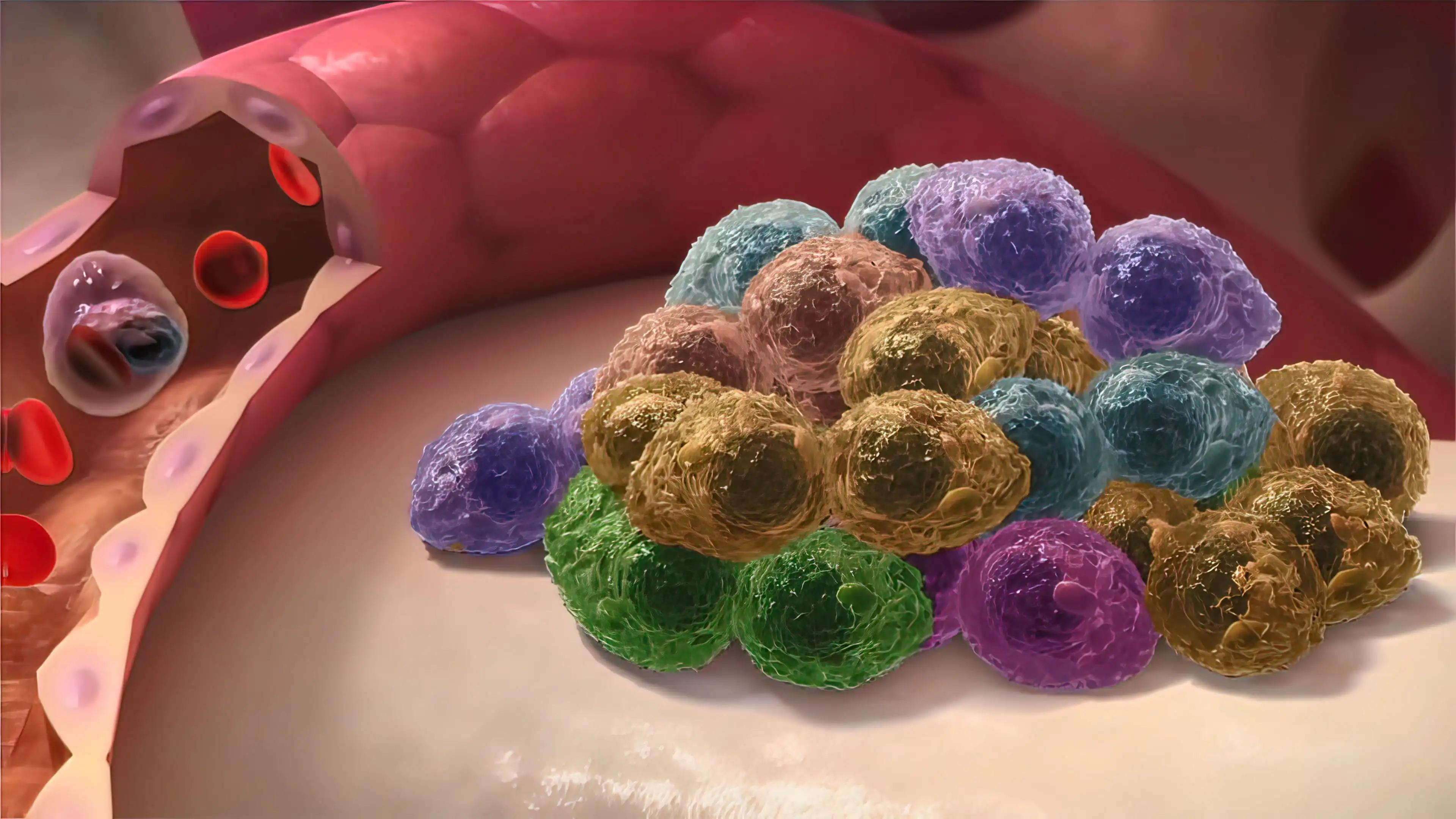KEY TAKEAWAYS
- The Atalanta-1 phase 1/2 trial aimed to develop an automated PoC for CAR T-cell product-GLPG5101 administration in pts with R/R NHL.
- The primary endpoint was ORR.
- GLPG5101 showed robust and durable expansion, presented a feasible PoC CAR T-Cell Therapy in R/R NHL.
Anti-CD19 CAR T-cell therapies provide clinical benefit for patients (pts) with relapsed/refractory (R/R) non-Hodgkin lymphoma (NHL). Complex logistics limit access to commercially available products; longer vein-to-vein times are associated with patient dropout and worse outcomes.
An innovative, decentralized, and automated point-of-care (PoC) manufacturing model was developed to address these issues. This model allows for the administration of a fresh autologous CAR T-cell product within 7 days of apheresis.
Marie José Kersten and the team developed an innovative, decentralized, and automated PoC manufacturing model to administer fresh autologous CAR T-cell products to adult pts with R/R NHL within 7 days of apheresis.
Researchers obtained data for 34 pts with R/R NHL in the Atalanta-1 study, which demonstrated the feasibility of PoC CAR T-cell manufacturing with a short vein-to-vein time (median 7 days). The vigorous and persistent in vivo expansion of GLPG5101 was observed with no unexpected safety findings. The promising efficacy results favored the therapy in pts who had already received a heavy pre-treatment for R/R NHL.
The results revealed that after they successfully administered GLPG5101 to 34 of 38 enrolled pts (R/R diffuse large B-cell lymphoma (DLBCL), n=10; mantle cell lymphoma (MCL), n=7; FL, n=15; marginal zone lymphoma (MZL), n=2) as of December 20, 2023. Among them, 17 pts received the treatment in Phase 1 (dose level [DL]1: 50×106 CAR+ T cells, n=7; DL2: 110×106 CAR+ T cells, n=9; <DL1, n=1), and 17 pts in Phase 2. Notably, 3 of Phase 1 pts received DL1 instead of DL2 due to a lower CAR+ T-cell yield. The majority (32 pts) received a fresh product within 7 (30 pts) or 8 days (2 pts) of leukapheresis, while 2 pts received a cryopreserved product within 13 days.
In the safety analysis set (N=33), median age was 64.5 years (range: 25–77) in Phase 1 and 67 years (range: 45–81) in Phase 2. Patients had a median of 3 prior treatments (range: 1–7) in Phase 1 and 3 treatments (range: 2–11) in Phase 2. Most treatment-emergent adverse events (TEAEs) were Grade ≤2; Grade ≥3 events were primarily hematological.
About 12 pts (36%) experienced cytokine release syndrome (CRS) (Grade ≤2, n=10; Grade 3, n=2), and immune effector cell-associated neurotoxicity syndrome (ICANS) occurred in 7 pts (21%) (Grade 1, n=6; Grade 3, n=1). Dose-limiting toxicities (DLTs) were reported in 4 out of 16 Phase 1 pts (DL1, n=1; DL2, n=3). Serious AEs included 1 Grade 5 intra-abdominal hemorrhage due to Grade 4 disseminated intravascular coagulation (DLT at DL2) and 1 Grade 5 urosepsis event occurring 6 months post-infusion.
In Phase 1 and Phase 2, 14 of 16 and 14 of 15 efficacy-evaluable pts responded to treatment (objective response rate (ORR) 87.5% and 93.3%, respectively), with 12 achieving a complete response (CR) in Phase 1 and 14 in Phase 2 (CRR 75.0% and 93.3%, respectively). Specifically for DLBCL, 7 of 9 Phase 1 pts responded (ORR 77.8%), with 5 achieving a CR (CRR 55.6%). In MCL, all 3 Phase 1 and 2 Phase 2 pts responded (ORR and CRR 100%). For FL, all 3 Phase 1 pts responded (ORR and CRR 100%), and 11 of 12 Phase 2 pts responded (ORR and CRR 91.7%). In MZL, both Phase 1 and Phase 2 pts had favorable outcomes with 1 patient in each phase achieving a CR.
In both Phase 1 and 2 across all dosage levels, there was a vigorous and consistent expansion of GLPG5101. Median peak expansion (Cmax) was 2.7×105 copies/μg DNA for Phase 1 and 2.5×105 copies/μg DNA for Phase 2, with median time to peak expansion (Tmax) at 14.0 days for Phase 1 and 13.5 days for Phase 2. Median exposure (AUCd0-28) was 2.8×106 copies/μg DNA × days for Phase 1 and 2.7×106 copies/μg DNA × days for Phase 2. GLPG5101 was detectable in peripheral blood for up to 12 months post-infusion.
The data observations concluded that the feasibility of PoC CAR T-cell manufacturing with a median 7-day vein-to-vein time. GLPG5101 showed robust in vivo expansion and durable persistence, with no unexpected safety issues, and promising efficacy in pts with heavily treated R/R NHL.
The trial was sponsored by Galapagos NV.
Source: https://library.ehaweb.org/eha/2024/eha2024-congress/422347
Clinical Trial: https://ashpublications.org/blood/article/140/Supplement%201/10323/489548, https://www.clinicaltrials.gov/study/NCT04856358
Kersten M. J., Saevels K., Servais S., et al. (2024). “Seven-day vein-to-vein point-of-care–manufactured CD19 CAR T-cells (GLPG5101) in relapsed/refractory non-Hodgkin lymphoma: results from the phase 1/2 ATALANTA-1 trial.” Presented at EHA 2024. (abstr 422347; S243), https://library.ehaweb.org/eha/2024/eha2024-congress/422347



